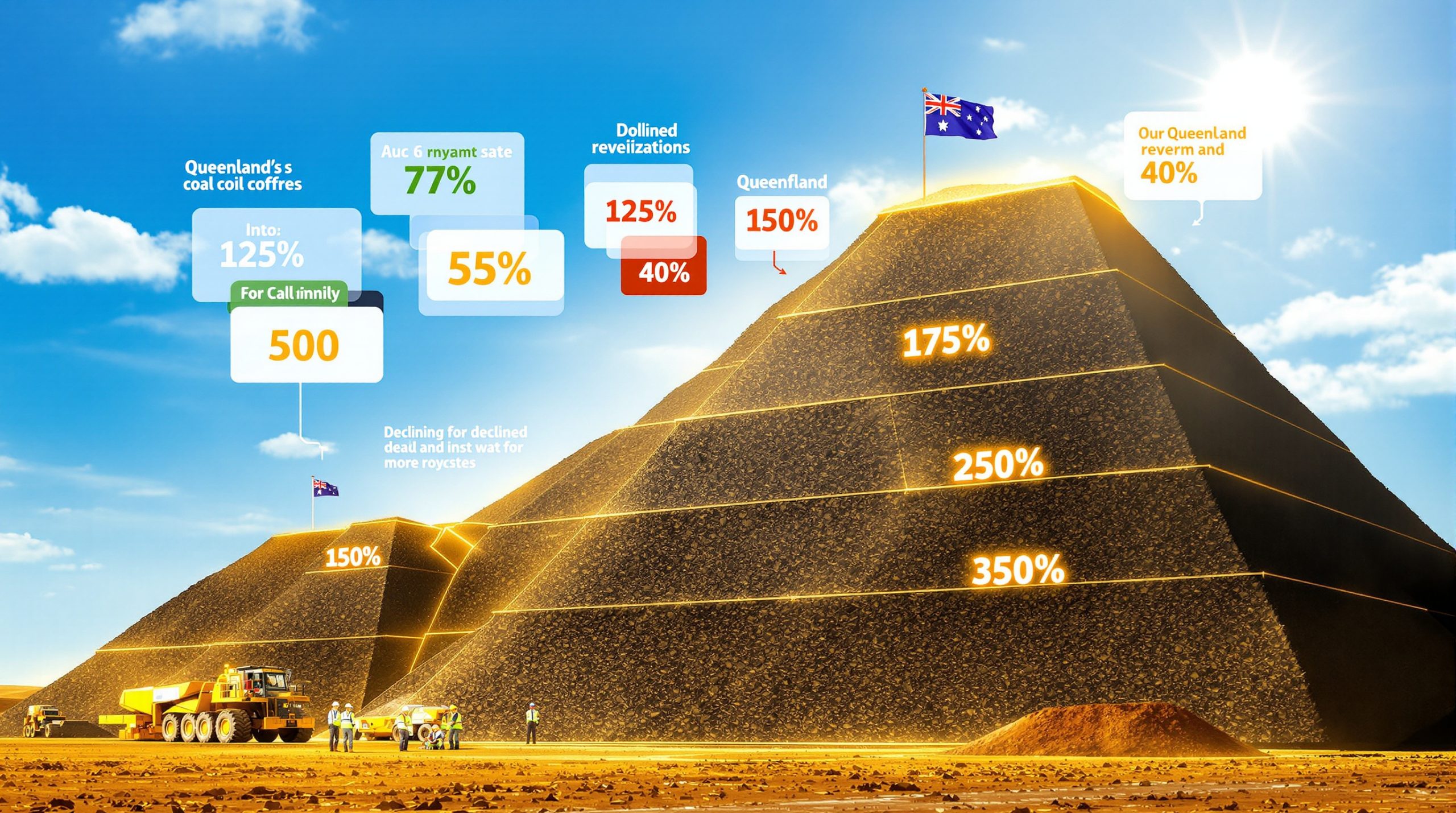US Ferrous Scrap Market: Navigating Current Trends and Future Trajectories
The US ferrous scrap industry operates as a critical component of the nation's circular economy, efficiently recycling metal resources while serving as an economic barometer for broader manufacturing and construction sectors. Current market conditions reveal a complex interplay of stable fundamentals with emerging forces that could reshape pricing dynamics through 2025 and beyond. Understanding these dynamics in relation to iron ore price trends can provide valuable insights for market participants.
What Is the Current State of the US Ferrous Scrap Market?
The US ferrous scrap market currently exhibits modest upward momentum, with key indicators suggesting stability rather than volatility in the immediate future. According to the latest Fastmarkets data from August 2025, the market Trend Indicator stands at 52.3, reflecting a slight positive bias.
Market Sentiment and Price Indicators
Market participants anticipate a modest 1.3% month-over-month price increase following July's flat pricing patterns. This projection comes with a strong consensus level of 63% among surveyed participants, indicating substantial alignment in expectations across the industry. The modest positive indicator suggests the market has found a temporary equilibrium rather than preparing for dramatic price movements.
"The current trend indicator of 52.3 points to incremental growth rather than disruptive change, giving market participants time to adjust strategies methodically." – Fastmarkets report, August 2025
The relatively narrow forecasted price movement reflects a market that has absorbed recent disruptions and established a new baseline for pricing expectations. This stability provides a foundation for strategic planning among both buyers and sellers.
Key Market Participant Perspectives
A fascinating aspect of the current market is the divergent sentiment among different participant categories:
| Participant Type | Sentiment Rating | Outlook |
|---|---|---|
| Sellers | 62.5 | Significantly optimistic |
| Buyers | 51.47 | Minimally optimistic |
| Brokers | 42.9 | Cautious |
This sentiment divergence highlights the tension between supply and demand forces currently at play. Sellers' optimism suggests confidence in their ability to maintain or improve pricing, while buyers and brokers demonstrate more reserved expectations.
The gap between seller and broker sentiment (19.6 points) is particularly noteworthy, indicating substantial disagreement about market direction among those who facilitate transactions versus those who supply material.
What Factors Are Influencing the US Scrap Market in 2025?
The current market environment is characterized by balanced forces rather than dominant drivers in either direction. This equilibrium creates a scenario where even minor shifts in key variables could tip market sentiment. Recent developments in iron ore surplus analysis provide valuable context for understanding these market dynamics.
Supply and Demand Dynamics
Inventory levels remain nearly neutral at 51.1, indicating balanced mill stock levels without signs of either shortage or oversupply. This neutral inventory position removes immediate supply pressure as a market-moving factor.
The primary market driver is reported as "All Unchanged," suggesting limited influential factors currently affecting pricing. Market participants appear to be in a wait-and-see mode, influenced more by a lack of negative drivers than by strong bullish signals.
- No single material factor is expected to shift the balance significantly in the short term
- Current dynamics favor gradual price adjustments rather than sharp movements
- The balanced inventory position provides stability but limits upside potential
- Mill purchasing patterns remain methodical rather than reactive
Macroeconomic Influences
Recent tariff policy effects are creating ripple effects across metal markets, though these impacts remain contained for now. The implementation of new tariffs on international markets continues reshaping supply chain considerations, with domestic suppliers potentially benefiting from reduced import competition.
Domestic production capacity utilization remains a key factor in scrap demand, with recent data showing steady but not exceptional levels. Meanwhile, infrastructure spending initiatives continue providing underlying support for ferrous materials, though the magnitude of impact varies by region and project type.
"Infrastructure projects initiated under federal funding programs continue supporting baseline demand, but haven't created the demand surge some market participants anticipated." – Fastmarkets report, August 2025
The broader economic outlook maintains influence over market sentiment, with concerns about potential slowdowns in manufacturing activity tempering otherwise positive indicators.
How Are Regional Markets Performing Across the US?
The national ferrous scrap market masks significant regional variations that create both challenges and opportunities for market participants. These geographic differences affect everything from pricing to material availability.
Geographic Price Variations
Coastal markets demonstrate notably different pricing patterns compared to inland regions, primarily driven by export accessibility. Regions with direct export market access—particularly the East and West coasts—experience more dynamic pricing as international demand competes with domestic consumption.
Transportation costs continue influencing regional price differentials, with recent fuel price volatility expanding the spread between delivered prices across regions. This transportation cost factor creates natural arbitrage opportunities while simultaneously limiting the movement of lower-value grades across long distances.
Local industrial activity levels drive significant regional demand variations:
- Manufacturing-heavy regions in the Midwest maintain consistent demand for prime grades
- Construction-focused southern markets favor structural grades
- Coastal regions balance domestic consumption with export opportunities
- Rural areas often face higher collection costs but lower competition
Supply Chain Considerations
Logistics challenges affect material movement between regions, with trucking capacity constraints and rail service inconsistencies creating periodic disruptions. These transportation bottlenecks can temporarily isolate regional markets, creating price divergence until material flows normalize.
Seasonal factors influence collection rates across different geographic areas, with northern regions experiencing winter-related disruptions while southern markets maintain more consistent year-round collection. This seasonality creates predictable supply variations that experienced market participants incorporate into their planning.
Regional mill capacity utilization rates vary significantly, creating "hot spots" of demand that can temporarily drive localized price increases. These utilization differentials reflect both planned maintenance schedules and varying end-market demand across regions.
What Are the Key Market Segments Within the Ferrous Scrap Industry?
The ferrous scrap market comprises distinct segments with unique characteristics, pricing dynamics, and end-use applications. Understanding these segments is essential for navigating the overall market effectively.
Grade-Specific Market Conditions
Prime grades continue commanding premium pricing due to their quality advantages, chemical consistency, and lower processing requirements. These grades—including #1 busheling, factory bundles, and prompt industrial scrap—remain the preferred input for applications requiring higher purity levels.
Obsolete grades face more price pressure due to abundant supply and variable quality characteristics. These materials, collected from end-of-life products and structures, require more processing to meet mill specifications but provide essential volume to the supply chain.
The comparison of key grade characteristics reveals these fundamental differences:
| Grade Category | Typical Price Premium | Quality Consistency | Processing Requirements | Primary Sources |
|---|---|---|---|---|
| Prime | High | Excellent | Minimal | Manufacturing facilities |
| Shredded | Medium | Good | Moderate | Mixed sources, post-processing |
| Obsolete | Low | Variable | Significant | Demolition, end-of-life products |
Shredded material maintains its position as a versatile intermediate option, offering a balance of quality and availability that appeals to a broad range of consumers. Advancements in shredding technology continue improving the consistency of this grade, gradually enhancing its value proposition.
End-User Demand Patterns
Electric arc furnace (EAF) operators remain the dominant consumers of ferrous scrap, with their production capacity and operational schedules significantly influencing market demand. The ongoing shift from integrated mills to EAF production continues supporting long-term scrap demand fundamentals.
Foundry demand provides stability for certain specialized grades, particularly those with consistent chemical compositions suitable for higher-specification castings. Though smaller in volume than EAF consumption, foundry demand creates reliable outlets for specific material types.
Export markets create additional outlets for specific material types, with international consumers often focusing on grades that align with their technological capabilities and product requirements. These export channels can absorb excess domestic supply during periods of weaker internal demand.
What Are Industry Experts Forecasting for the Remainder of 2025?
Industry forecasts for the remainder of 2025 suggest modest but positive momentum in the US ferrous scrap market, with limited volatility expected absent major macroeconomic shifts. The ongoing mining industry evolution continues to influence these forecasts.
Short-Term Price Projections
The modest upward bias indicated by the August Trend Indicator (52.3) suggests limited price movement through Q3 2025, with incremental rather than dramatic adjustments anticipated. This projection aligns with typical seasonal patterns that often show strengthening in early fall as mills prepare for potential winter collection disruptions.
Supply-side constraints remain minimal in the current environment, with no major disruptions to collection or processing capabilities reported. This stable supply picture reinforces expectations for gradual rather than sudden price movements.
"The survey points to a steady August, with limited upward pressure on prices—consistent with a market finding equilibrium after recent adjustments." – Fastmarkets report, August 2025
Market participants anticipate gradual rather than dramatic price adjustments, with the 1.3% projected month-over-month increase representing a modest but positive direction. This incremental growth pattern could continue through year-end barring external shocks.
Longer-Term Market Outlook
Infrastructure investment initiatives may provide sustained demand support extending into 2026, though the timing and magnitude of project implementation remain somewhat uncertain. These public sector investments create a potential floor for demand even if private sector consumption weakens.
Manufacturing activity trends will significantly influence prime grade availability, with any contraction in production directly reducing the generation of prime industrial scrap. This connection creates a natural balancing mechanism, as reduced manufacturing typically corresponds with reduced scrap supply.
Environmental regulations continue shaping collection and processing methods, with compliance costs gradually becoming a more significant factor in operational economics. These regulatory influences may accelerate industry consolidation as smaller operators face increasing compliance burdens.
Technology advancements in sorting and processing affect material quality and value, with investments in automated separation and analysis systems improving recovery rates and product consistency. These technological improvements gradually enhance the value proposition of processed scrap versus raw materials.
How Are International Developments Affecting the US Scrap Market?
Global market developments increasingly influence domestic US scrap markets, creating both opportunities and challenges for industry participants. The US‑China trade war impact remains a significant factor in these international dynamics.
Global Trade Patterns
Recent tariff implementations are reshaping international material flows, with policy changes creating both barriers and incentives that affect global scrap movement. These trade policy adjustments can redirect material from established channels, creating temporary imbalances until the market adapts.
Export opportunities influence domestic price formation, as international buyers effectively establish price floors in regions with viable export logistics. This export competition can benefit domestic suppliers by creating additional demand outlets during periods of weaker internal consumption.
International shipping costs affect the competitiveness of US exports, with recent volatility in ocean freight rates changing the economics of export transactions. These shipping cost fluctuations can quickly alter the viability of international sales, effectively opening or closing export channels based on transportation economics.
Global steel production rates drive fundamental demand for recycled materials, with production shifts in major consuming nations directly affecting their import requirements. This connection makes US exporters sensitive to industrial policy decisions in key international markets.
Competitive Market Positioning
The US maintains its position as a major global scrap supplier, with its developed collection infrastructure and processing capabilities ensuring consistent material availability. This established position provides resilience against short-term market disruptions.
Emerging market demand creates alternative outlets for domestic material, with developing nations increasing their EAF production capacity and consequently their scrap requirements. These emerging consumers provide diversification for US exporters previously focused on traditional markets.
Quality standards variations affect international marketability, with different regions applying varying specifications and acceptance criteria. These differences create both challenges and opportunities for US exporters, who must adapt their sorting and processing to meet destination market requirements.
Currency exchange rates influence international trade competitiveness, with dollar strength or weakness directly affecting the purchasing power of international buyers. These currency movements can rapidly change export economics independent of underlying supply-demand fundamentals.
What Strategies Are Market Participants Adopting?
Market participants are implementing various strategies to navigate the current balanced market conditions, with approaches differing based on their position in the value chain and risk tolerance.
Buyer and Seller Approaches
Buyers maintain cautious purchasing patterns given the stable outlook, focusing on just-in-time acquisition rather than speculative inventory building. This measured approach reflects confidence in material availability without fear of dramatic price increases.
Sellers seek opportunities to capitalize on modest upward momentum, with some exploring expanded export channels to diversify their customer base. This diversification strategy helps manage risk while potentially accessing more favorable pricing in certain markets.
Brokers position themselves to manage risk in a relatively flat market, focusing on service differentiation and logistics efficiency rather than price speculation. This value-added approach helps maintain margins in an environment where price arbitrage opportunities may be limited.
Inventory management strategies reflect the balanced market conditions:
- Buyers: Maintaining minimal working inventories to limit exposure to potential price decreases
- Sellers: Timing releases to align with anticipated seasonal strengthening
- Processors: Balancing processing capacity utilization against inventory carrying costs
- Exporters: Monitoring international price spreads for arbitrage opportunities
Risk Management Considerations
Price hedging mechanisms gain importance in uncertain markets, with forward contracts and financial instruments providing tools to manage exposure. These hedging approaches allow market participants to lock in acceptable margins while reducing vulnerability to unexpected price movements.
Contract structures adapt to manage volatility risks, with more flexible pricing mechanisms replacing fixed long-term agreements. These adaptive contracts help balance risk between buyers and sellers during periods of uncertainty.
Market participants focus on relationship management during stable periods, investing in strengthening supply chain partnerships that can provide advantages during more volatile conditions. These relationship investments often yield dividends when market conditions tighten.
Information advantage becomes critical in anticipating market shifts, with participants investing in market intelligence and analytical capabilities. This focus on information quality helps identify emerging trends before they become widely recognized, providing strategic advantages.
FAQ: US Ferrous Scrap Market
What is driving the current US ferrous scrap market sentiment?
The current market sentiment reflects a balance between supply and demand with no dominant factor driving significant change. Market participants report "All Unchanged" as the main market driver, indicating a period of relative stability where neither bullish nor bearish factors have gained dominance.
How do different market participants view the current market?
There's a notable divergence in perspectives, with sellers showing optimism (62.5 sentiment rating), buyers displaying minimal optimism (51.47), and brokers remaining cautious (42.9). This split highlights the different incentives and market positions of each group, with sellers naturally seeking higher prices while buyers and intermediaries maintain more conservative outlooks.
What do current inventory levels indicate about the market?
With inventory levels rated at 51.1, mills are maintaining average stock levels, suggesting neither oversupply nor shortage conditions. This balanced inventory position contributes to the overall market stability and removes immediate supply pressure as a price-driving factor. The neutral inventory position also suggests mills feel comfortable with their current buffer stocks given the steady supply outlook.
How might seasonal factors affect the market in the coming months?
Historically, early fall often brings increased demand as mills prepare for potential weather-related collection disruptions. This seasonal pattern could support the modest upward bias currently indicated in the market, particularly in northern regions where winter conditions more significantly affect collection activities. Additionally, construction season activity influences certain grade demand, creating predictable seasonal patterns that experienced market participants incorporate into their planning.
What role do export markets play in the US ferrous scrap landscape?
Export markets serve as important alternative outlets for US scrap, creating price competition with domestic consumers. Recent trade policy developments and international shipping costs significantly influence these export opportunities. Export markets also provide crucial demand diversification, allowing suppliers to redirect material when domestic consumption weakens. The presence of export options effectively establishes price floors in regions with viable export logistics.
Key Considerations for Market Participants
When navigating the current market environment, industry participants should consider several strategic approaches:
- Focus on operational efficiency during periods of stable pricing to maintain margins
- Diversify customer and supplier relationships to reduce concentration risk
- Monitor leading indicators for early signs of directional change
- Maintain flexible inventory positions that can adapt to emerging trends
- Explore grade optimization opportunities to maximize value recovery
- Develop scenario-based contingency plans for potential market shifts
- Invest in market intelligence capabilities to gain information advantages
The current balanced market environment provides an opportunity to implement strategic improvements without the pressure of extreme volatility. Market participants who use this period effectively will be better positioned to navigate future market fluctuations.
Ready to Spot the Next Major Mineral Discovery?
Stay ahead of the market with Discovery Alert's proprietary Discovery IQ model, delivering instant notifications on significant ASX mineral discoveries and transforming complex data into actionable investment insights. Explore how historic discoveries have generated substantial returns by visiting the Discovery Alert discoveries page and begin your 30-day free trial today.




